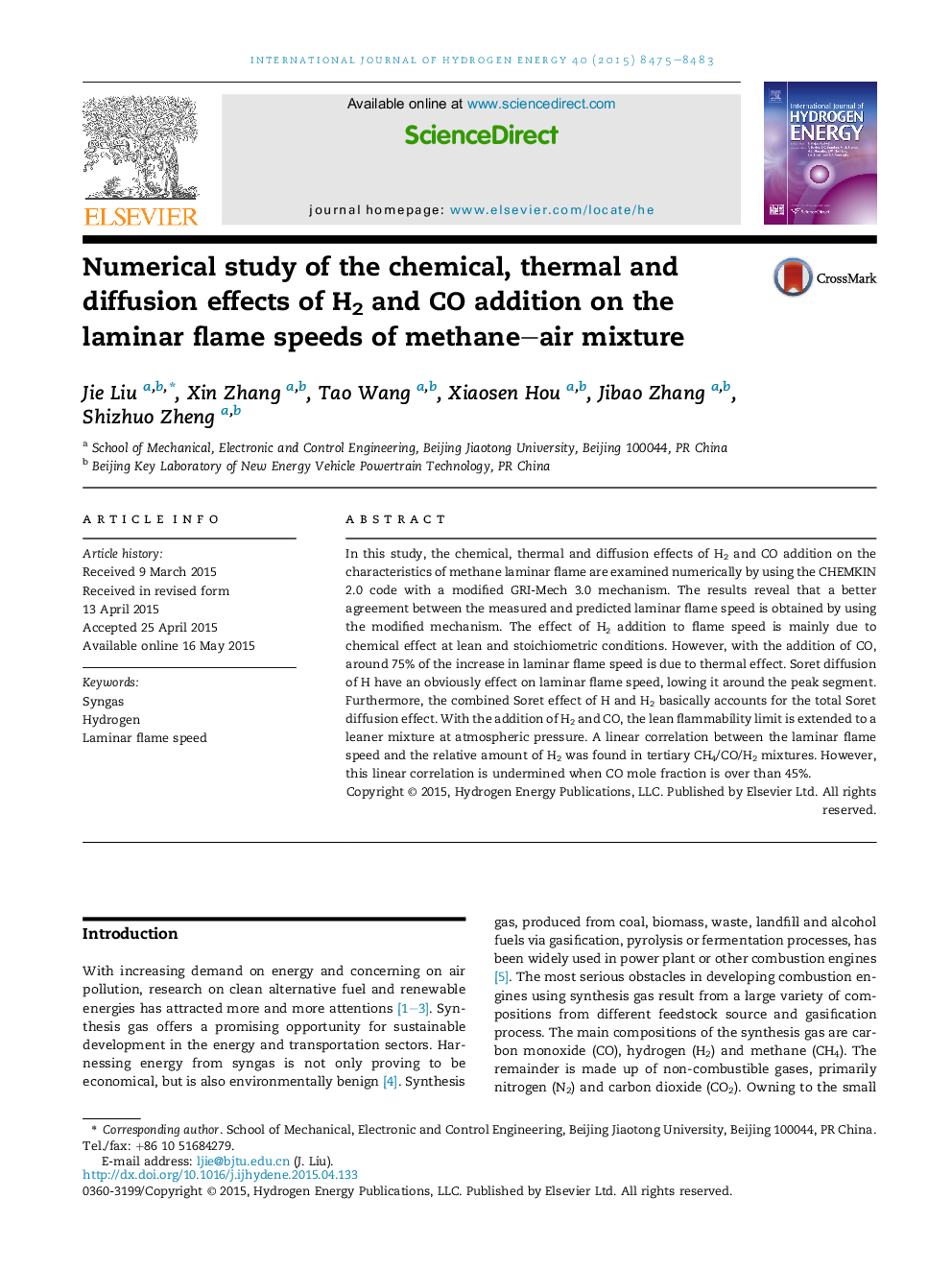| Article ID | Journal | Published Year | Pages | File Type |
|---|---|---|---|---|
| 1270727 | International Journal of Hydrogen Energy | 2015 | 9 Pages |
•Laminar burning velocities of the CH4/H2/CO–air flames are studied.•A new reaction mechanism modified from the GRI-Mech 3.0 mechanism is proposed.•Thermal effect on laminar flame speed is analyzed.•H, H2 and CO Soret diffusion effects on laminar flame speed are analyzed.
In this study, the chemical, thermal and diffusion effects of H2 and CO addition on the characteristics of methane laminar flame are examined numerically by using the CHEMKIN 2.0 code with a modified GRI-Mech 3.0 mechanism. The results reveal that a better agreement between the measured and predicted laminar flame speed is obtained by using the modified mechanism. The effect of H2 addition to flame speed is mainly due to chemical effect at lean and stoichiometric conditions. However, with the addition of CO, around 75% of the increase in laminar flame speed is due to thermal effect. Soret diffusion of H have an obviously effect on laminar flame speed, lowing it around the peak segment. Furthermore, the combined Soret effect of H and H2 basically accounts for the total Soret diffusion effect. With the addition of H2 and CO, the lean flammability limit is extended to a leaner mixture at atmospheric pressure. A linear correlation between the laminar flame speed and the relative amount of H2 was found in tertiary CH4/CO/H2 mixtures. However, this linear correlation is undermined when CO mole fraction is over than 45%.
